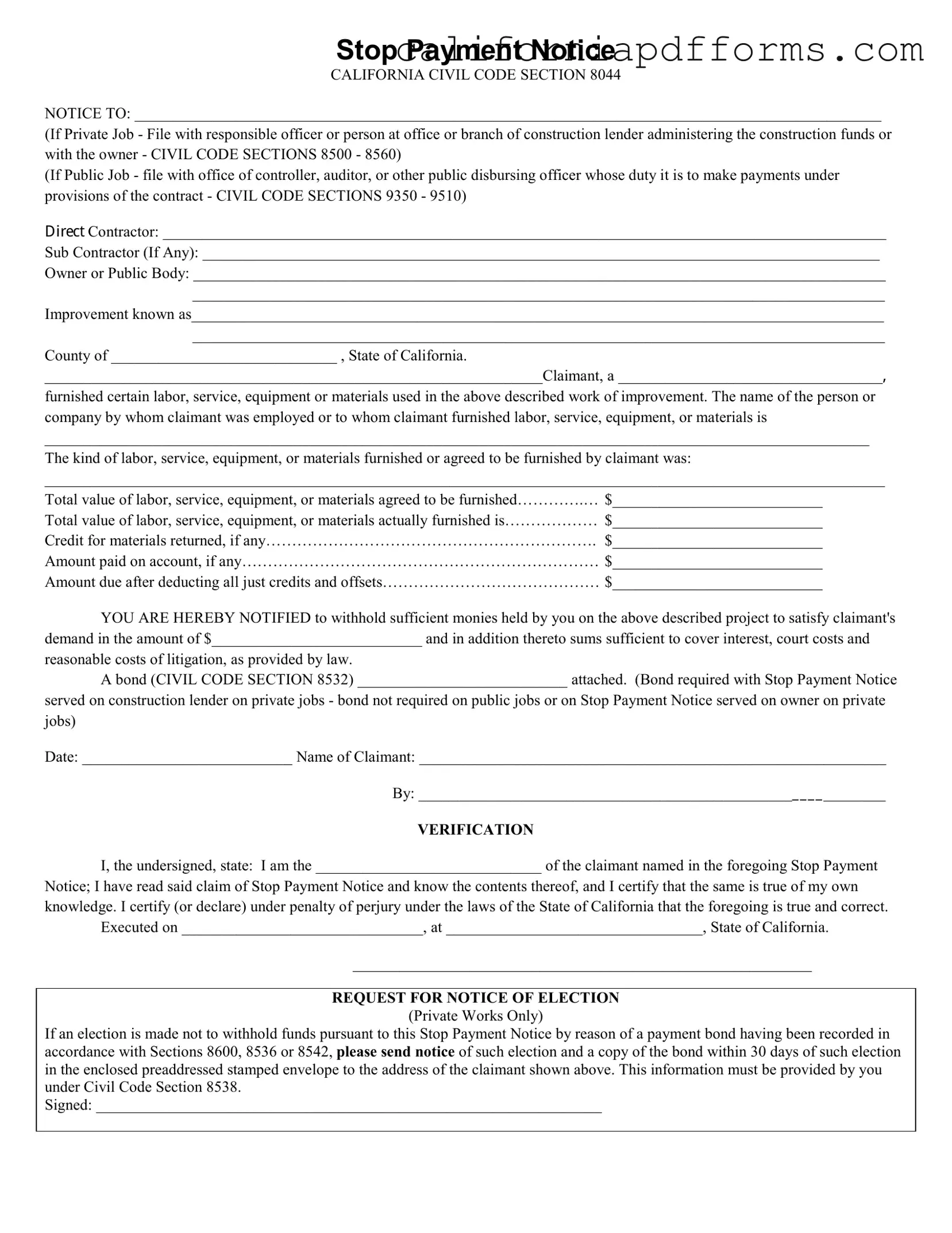Download California Stop Payment Form
The California Stop Payment form is a legal document that allows a claimant to notify a construction lender or property owner to withhold payment for labor, services, equipment, or materials that have not been paid for. This form is essential for ensuring that workers and suppliers are compensated for their contributions to a construction project. To initiate the process, complete the form by clicking the button below.
Open Your Form Online
